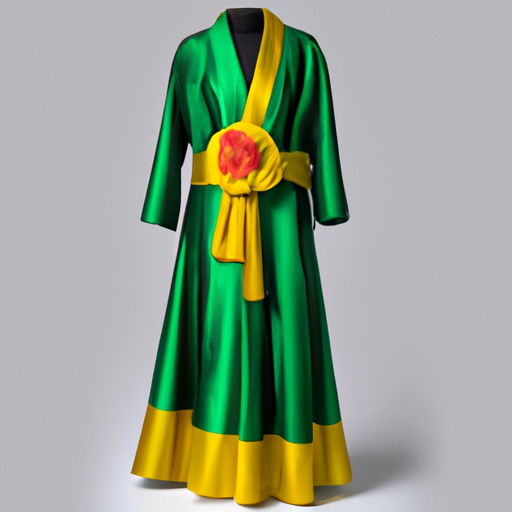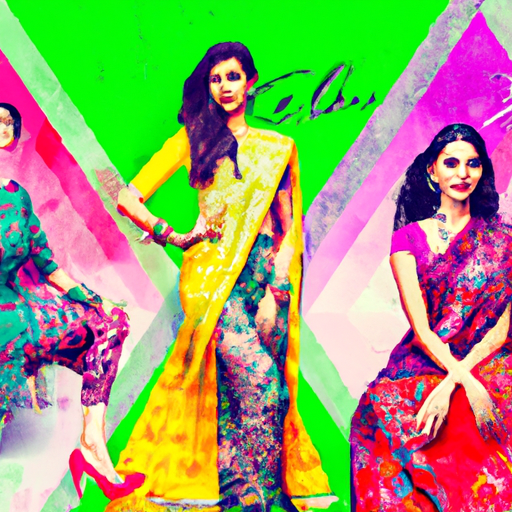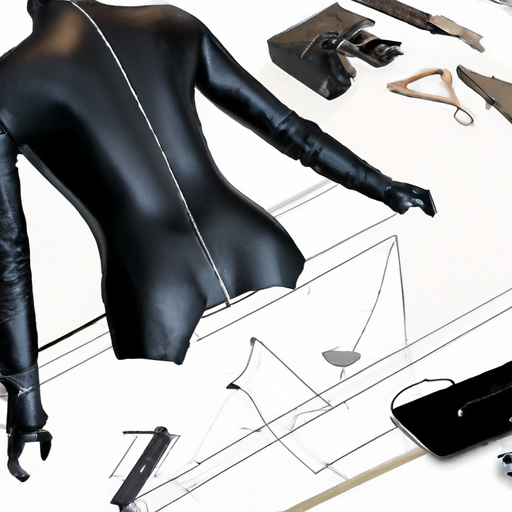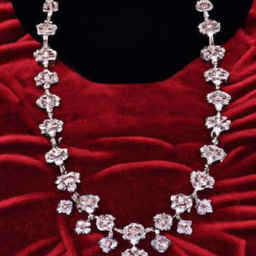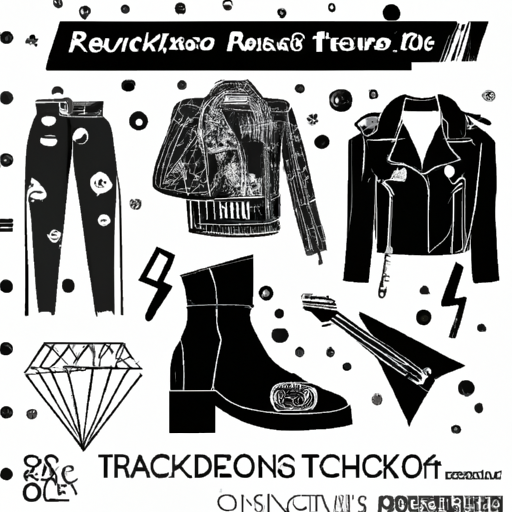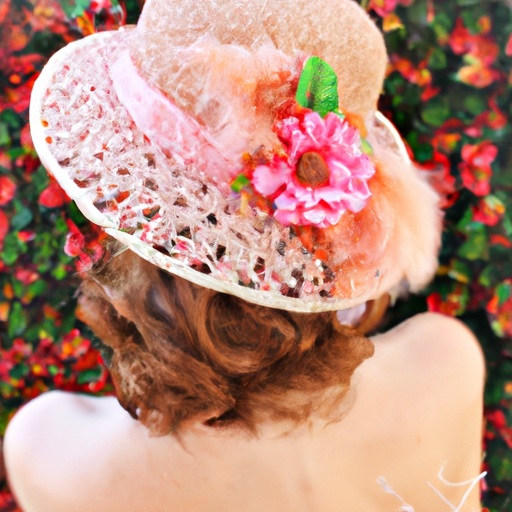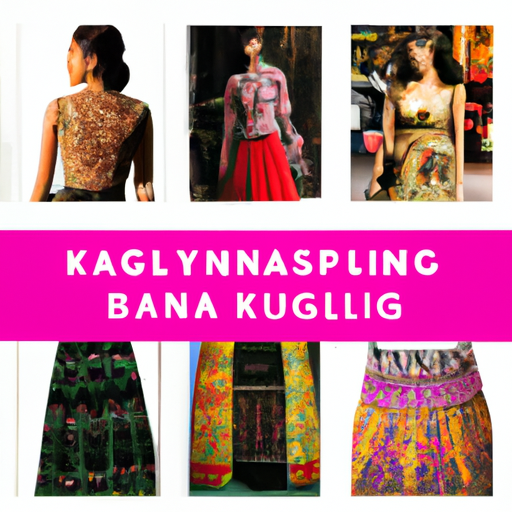Chinese Fashion Trends
Traditional Chinese Clothingve been taking the world by storm lately. With their unique blend of traditional elements and modern aesthetics, Chinese fashion has gained popularity across the globe. From the elegant qipao dresses to the iconic cheongsam, these traditional garments have been reimagined and adapted to suit modern tastes. Furthermore, Chinese fashion designers have been incorporating elements of their rich cultural heritage into contemporary designs, resulting in stunning creations that blend tradition with innovation. As a result, Chinese fashion trends are not only making waves within the Chinese fashion industry but are also influencing global fashion, leaving a lasting impact on runways and wardrobes around the world. Whether you’re a fashion enthusiast or simply intrigued by the fashion world, this article is your guide to the mesmerizing world of Chinese fashion trends.
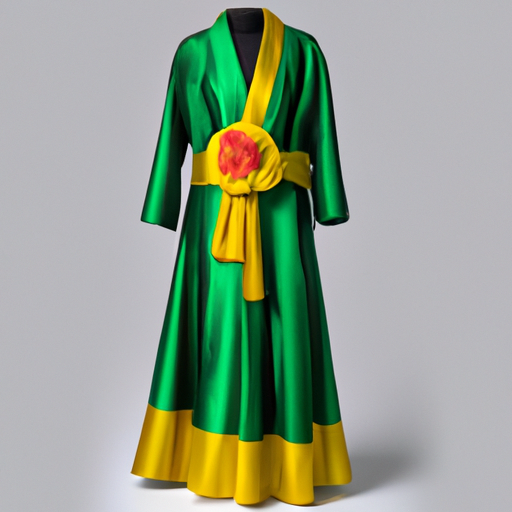
Table of Contents
Traditional Chinese Clothing
Hanfu
Hanfu is a traditional Chinese clothing style that dates back to the Han Dynasty (206 BCE – 220 CE). It is characterized by its loose, flowing silhouette and intricate embroidery. Hanfu, which literally means “Han clothing,” emphasizes modesty and elegance. The garments typically consist of a robe, an outer coat, and various accessories like belts and headdresses. Each piece has its symbolic meaning and reflects the wearer’s social status and identity.
Cheongsam
The cheongsam, also known as the qipao, originated in the 1920s and 1930s in Shanghai, China. It is a fitted dress that hugs the body’s curves while maintaining its elegance. The cheongsam is often made of silk or satin and features high collars and enticing slits. It gained popularity not only in China but also internationally due to its unique blend of traditional Chinese elements with modern fashion.
Tangzhuang
Tangzhuang, also known as the Chinese suit, is a traditional outfit that originated during the Qing Dynasty (1644-1912). It is characterized by its loose-fitting silhouette and mandarin collar. The tangzhuang is typically worn by both men and women and is often made of silk or brocade. It is commonly seen in formal occasions or as a cultural symbol during festivals or performances.
Qipao
The qipao, also known as the cheongsam, is a classic Chinese dress that represents femininity and grace. Originating from the Qing Dynasty, the qipao is a form-fitting dress that accentuates the female form while maintaining its elegance. It is often made of silk or brocade and features high collars, intricate embroidery, and side slits. The qipao has become synonymous with Chinese fashion and is especially popular as a choice for weddings and formal events.
Fashion Influences
Western Influences
Over the years, Western fashion has had a significant impact on Chinese fashion trends. With globalization and increased exposure to Western cultures, Chinese fashion has embraced Western elements, incorporating them into the traditional Chinese aesthetic. This fusion of styles has led to a unique blend of East-meets-West fashion, creating new and exciting fashion trends in China.
Korean Wave
The popularity of the Korean Wave, also known as Hallyu, has heavily influenced Chinese fashion. Korean dramas, music, and celebrities have gained immense popularity in China, leading to an influx of Korean-inspired fashion trends. The youthful and trendy styles seen in Korean fashion, such as oversized streetwear and K-pop inspired outfits, have become widely adopted by the Chinese youth.
Japanese Influence
Japanese fashion has long been admired for its avant-garde and cutting-edge designs. The unique silhouettes, bold colors, and unconventional patterns have made a significant impact on Chinese fashion. From street style to high fashion, various Japanese fashion trends, such as Lolita fashion, Harajuku fashion, and minimalist designs, have been embraced by Chinese fashion enthusiasts.
Street Style
Street style has become a global phenomenon, and China is no exception. Chinese street style is known for its youthful and eclectic nature. Influenced by Western streetwear, Chinese youth mix and match different styles to create unique and personalized looks. From casual and sporty to edgy and experimental, Chinese street style is all about self-expression and pushing the boundaries of fashion.
Chinese Street Style
Youthful and Eclectic
Chinese street style is known for its youthful and free-spirited vibe. The young generation embraces fashion as a form of self-expression, using bold colors, patterns, and unconventional combinations. From vibrant streetwear to quirky accessories, Chinese street style is all about standing out and showcasing individuality.
Mixing Traditional and Modern
A unique aspect of Chinese street style is the blend of traditional and modern elements. Fashion-forward individuals often incorporate traditional Chinese garments or accessories into their outfits, adding a touch of cultural heritage to their contemporary looks. It is not uncommon to see someone wearing a modern streetwear ensemble with a traditional embroidered jacket or a cheongsam-inspired dress paired with sneakers.
Embracing Bold Colors and Patterns
Chinese street style embraces bold and vibrant colors, making a statement through standout hues. From vivid reds symbolizing luck and happiness to electric blues and neon yellows, Chinese fashionistas are not afraid to experiment with color. Mixing contrasting patterns and prints is also a popular trend, adding depth and visual interest to outfits.
Experimental and Avant-garde
Chinese street style enthusiasts are known for pushing the boundaries and embracing avant-garde fashion. They are not afraid to experiment with unconventional materials, silhouettes, and accessories. Chinese street style often blends elements of high fashion with unexpected twists, creating eye-catching and thought-provoking looks.
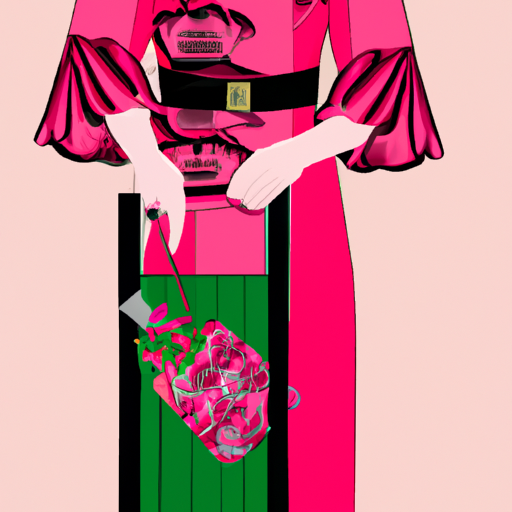
Online Shopping and Influencers
Rise of E-commerce Platforms
E-commerce platforms have revolutionized the way people shop for fashion in China. With the rise of online shopping giants like Alibaba’s Tmall and JD.com, Chinese consumers have easy access to a wide range of local and international fashion brands. Online shopping offers convenience, competitive prices, and a vast selection, making it a popular choice for fashion-savvy individuals.
Key Fashion Influencers
Social media platforms have played a significant role in shaping Chinese fashion trends. Influencers on platforms like Weibo, WeChat, and Xiaohongshu (Little Red Book) have gained massive followings and have become trusted sources for fashion inspiration. Their curated outfits, product recommendations, and style guides heavily influence consumer choices, driving trends and brand endorsements.
Livestreaming and Influencer Marketing
Livestreaming has become a powerful tool for fashion marketing in China. Influencers and brands collaborate to host livestreaming sessions, showcasing new collections, offering styling tips, and providing exclusive discounts to viewers. Consumers can directly interact with influencers, ask questions, and make purchases in real-time, creating a highly engaging and interactive shopping experience.
Innovation in Fashion Tech
China is at the forefront of fashion technology innovation. From virtual reality (VR) fashion shows to smart dressing rooms equipped with interactive mirrors and augmented reality (AR) shopping experiences, Chinese fashion tech startups are pushing the boundaries of traditional retail. These advancements are transforming the way consumers explore, shop, and interact with fashion.
Cosplay and Anime Influence
Popularity of Cosplay in China
Cosplay, the practice of dressing up as fictional characters from anime, manga, and video games, has gained immense popularity in China. Cosplay events and conventions attract thousands of enthusiasts, showcasing their meticulously crafted costumes and intricate makeup. The cosplay community has created a subculture that crosses over into fashion, inspiring unique and creative looks.
Anime-inspired Fashion
Anime has long been a source of inspiration for fashion in China. From graphic prints featuring popular anime characters to clothing collections inspired by anime aesthetics, anime-inspired fashion is a trend that resonates with many Chinese youth. Anime fandom has become a significant influence on street style, with individuals incorporating anime elements into their outfits through accessories, hair color, and makeup.
Collaborations with Anime Companies
Fashion collaborations with anime companies have become increasingly popular in China. These collaborations often result in limited-edition fashion collections featuring iconic characters and artwork from popular anime series. Chinese designers and brands team up with anime companies to create unique pieces that allow fans to express their love for their favorite series through fashion.
Influence of Online Gaming Culture
China has a thriving online gaming culture, and it has had a significant influence on fashion trends. Gaming-inspired fashion, known as “gamer chic,” often features bold graphics, futuristic designs, and sportswear elements. Chinese gamers incorporate their love for gaming into their fashion choices, from graphic t-shirts and hoodies to accessories inspired by gaming aesthetics.
Luxury Brands and Rising Domestic Designers
Growing Demand for Luxury Goods
China’s increasing middle and upper-class population has created a growing demand for luxury fashion brands. Chinese consumers are drawn to high-end fashion labels for their status symbol and perceived quality. Luxury brands have capitalized on this demand by expanding their presence in China and tailoring their designs and marketing strategies to cater to the Chinese market.
International Designer Collaborations
International designer collaborations with Chinese brands have become a popular trend in China. Established luxury brands often collaborate with Chinese designers or incorporate traditional Chinese elements into their collections to cater to the local market. These collaborations bring together the best of both worlds, combining Western design expertise with Chinese cultural influences.
Success Stories of Chinese Designers
Chinese designers are making their mark on the global fashion stage, showcasing their talent and creativity. Names like Guo Pei, who gained international recognition for designing Rihanna’s iconic yellow gown at the Met Gala, and Angel Chen, known for her vibrant and eclectic designs, have established themselves as influential figures in the fashion industry. Chinese designers are bringing their unique perspectives and pushing boundaries, gaining recognition and success worldwide.
Supporting Domestic Fashion Talent
The Chinese government and various organizations are actively supporting and promoting domestic fashion talent. Initiatives such as fashion weeks, design competitions, and grants aim to nurture young designers, provide opportunities for exposure, and build a thriving domestic fashion industry. The support for domestic designers not only boosts China’s creative economy but also helps preserve and promote Chinese cultural heritage through fashion.
Gender-Neutral and Androgynous Fashion
Breaking Gender Stereotypes
Gender-neutral and androgynous fashion has gained traction in China, challenging traditional gender norms. Fashion is increasingly seen as a form of self-expression, allowing individuals to break free from societal expectations and embrace their true selves. The rise of gender-neutral fashion is a reflection of the ongoing movement towards inclusivity and acceptance of diverse identities.
Blurring the Lines Between Masculine and Feminine
Chinese fashion has embraced the blurring of lines between masculine and feminine aesthetics. Designers and consumers alike are no longer confined to traditional gendered fashion choices. Tailoring, oversized silhouettes, and unconventional materials are commonly seen in gender-neutral fashion, allowing wearers to express themselves without conforming to prescribed notions of masculinity or femininity.
Gender-Neutral Clothing Brands
A wave of gender-neutral clothing brands has emerged in China, catering to individuals who seek fashion that transcends gender norms. These brands offer clothing options that fit a variety of body types and allow customers to express their unique style without conforming to societal expectations. With a focus on inclusivity, these brands promote the idea that fashion is for everyone, regardless of gender.
Inclusive Fashion Movement
China is witnessing a growing inclusive fashion movement, advocating for diversity in representation, body positivity, and breaking down barriers in the fashion industry. Influencers and activists are challenging the norms and promoting the idea that fashion should be inclusive and accessible to everyone. This movement is reshaping the fashion landscape in China, fostering a more inclusive and accepting environment.
Sustainable and Ethical Fashion
Shift towards Sustainable Practices
In recent years, there has been a growing awareness of sustainable and ethical fashion in China. Consumers are becoming more conscious of the environmental and social impact of the fashion industry and are demanding more sustainable practices. From eco-friendly materials to ethical manufacturing processes, Chinese fashion brands are making efforts to reduce waste, minimize pollution, and promote fair labor practices.
Promoting Ethical Fashion
Ethical fashion is gaining momentum in China, with organizations and campaigns promoting fair trade, responsible sourcing, and transparency. Consumers are encouraged to support brands that prioritize ethical practices and promote positive change in the industry. This shift towards ethical fashion reflects a broader global trend and signifies a growing desire for more conscious consumption.
Eco-friendly Materials and Production
Chinese fashion brands are increasingly using eco-friendly materials and adopting sustainable production methods. Renewable fibers like organic cotton, bamboo, and hemp are being incorporated into clothing, reducing the industry’s reliance on non-renewable resources. Furthermore, brands are investing in technologies and processes that reduce water consumption, energy usage, and waste production, minimizing the environmental footprint of the fashion industry.
Rise of Secondhand and Vintage Fashion
Secondhand and vintage fashion are gaining popularity in China as sustainable alternatives to fast fashion. Online platforms and physical stores dedicated to selling pre-loved clothing have emerged, giving consumers more options to shop sustainably. This shift towards secondhand fashion not only reduces textile waste but also promotes the idea of extending the life cycle of garments, making fashion more circular and less impactful on the environment.
Accessories and Footwear
Innovative and Unique Accessories
Chinese fashion is known for its innovative and unique accessories that add a touch of creativity to outfits. From statement jewelry pieces to avant-garde headpieces, Chinese designers are pushing the boundaries of accessory design. Whether it’s reimagining traditional Chinese ornaments or experimenting with unconventional materials, Chinese accessories are an essential part of the overall fashion aesthetic.
Retro-Inspired Sunglasses
Retro-inspired sunglasses have become a popular fashion accessory in China. Influenced by vintage styles from the 1960s and 1970s, oversized frames, cat-eye shapes, and tinted lenses are commonly seen on the streets of Chinese cities. These sunglasses not only protect the eyes from the sun but also add a touch of nostalgia and sophistication to any outfit.
Statement Bags and Clutches
Statement bags and clutches are essential accessories in Chinese fashion. From intricate embroidery to bold prints and embellishments, these bags serve not only as functional accessories but also as a way to express personal style. Chinese designers are known for their attention to detail and craftsmanship, resulting in unique and eye-catching bag designs.
Sneakers and Streetwear Influence
The rise of streetwear culture has had a significant impact on Chinese footwear fashion. Sneakers have become a staple in Chinese street style, with both local and international sneaker brands gaining popularity. Whether it’s classic silhouettes or limited-edition collaborations, sneakers allow individuals to effortlessly blend comfort, style, and streetwear aesthetics.
Beauty Trends in Chinese Fashion
Flawless Skin and Natural Makeup
In Chinese fashion, there is a strong emphasis on clear, flawless skin and natural-looking makeup. Skincare routines and products receive great attention, focusing on achieving radiant and healthy skin. Natural makeup looks, characterized by light coverage, soft blush, and subtle enhancements, are favored over heavy makeup applications.
Bold Lip Colors
Bold lip colors have become a statement in Chinese fashion. From vibrant reds symbolizing luck and auspiciousness to deep plums and bright pinks, Chinese fashionistas are not afraid to make a statement with their lip color choices. Whether it’s a matte finish or a glossy sheen, bold lips add a touch of glamour and confidence to any outfit.
Influence of Korean Beauty
Korean beauty trends have made a significant impact on Chinese fashion. The popularity of Korean skincare routines, sheet masks, and innovative beauty products has influenced Chinese consumers’ beauty routines and preferences. From glass skin to dewy makeup looks, Korean beauty trends have become an integral part of Chinese fashion and beauty culture.
Chinese Traditional Beauty Practices
Chinese traditional beauty practices continue to influence fashion trends in China. Traditional Chinese medicine principles, such as balancing yin and yang, have inspired skincare ingredients and rituals. Chinese herbal remedies, like ginseng and goji berries, are used in beauty products to promote skin health and vitality. These traditional practices connect fashion with cultural heritage and promote a holistic approach to beauty.
Chinese fashion trends encompass a wide range of styles and influences, from traditional clothing to modern street style. The fusion of traditional and contemporary elements, as well as the rise of online shopping and influencer culture, has shaped the fashion landscape in China. From sustainable and ethical fashion to gender-neutral clothing and accessories, Chinese fashion is constantly evolving, reflecting the changing tastes and values of its diverse population. As China continues to influence global fashion, it remains an exciting and dynamic force in the industry.
